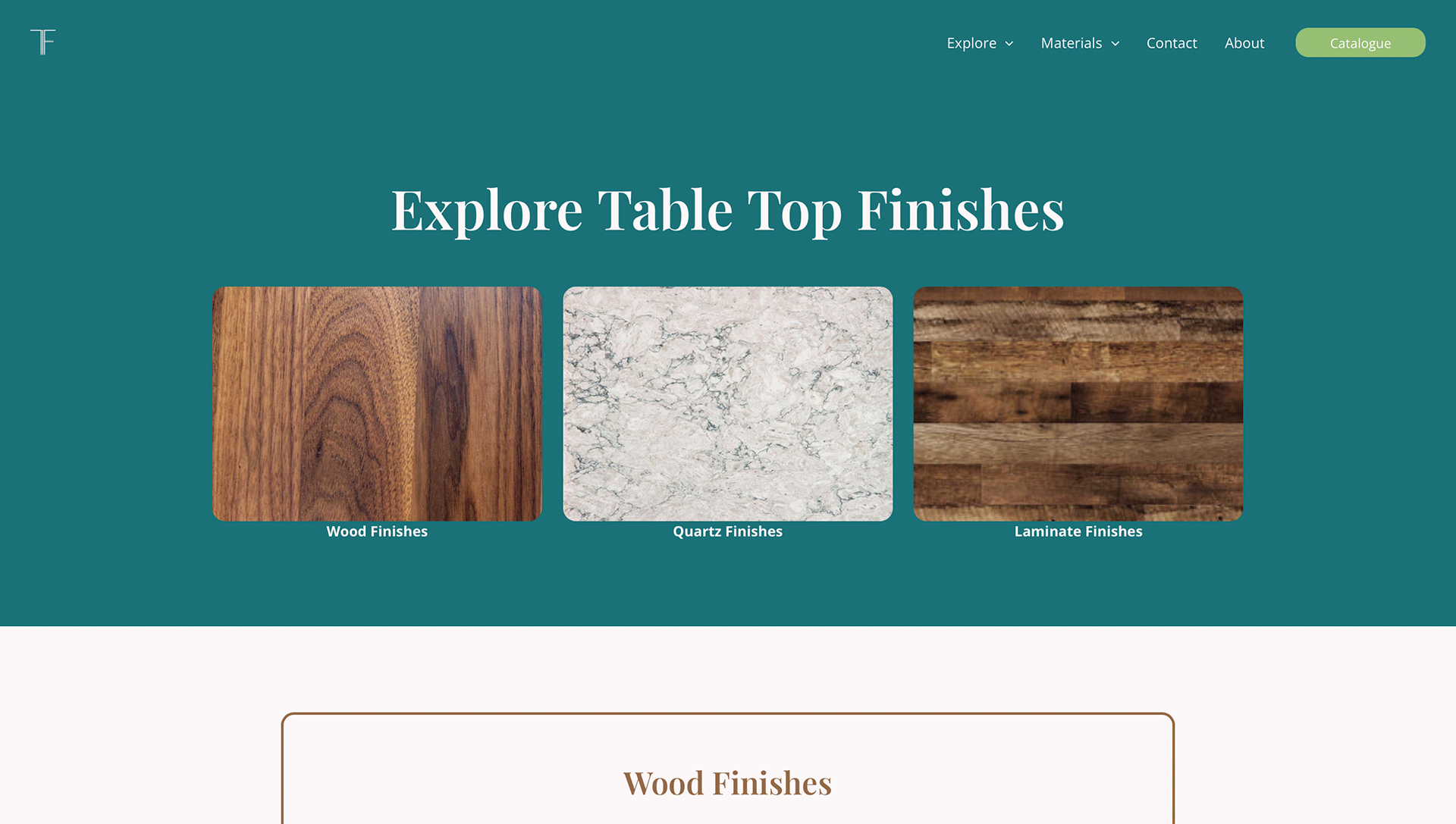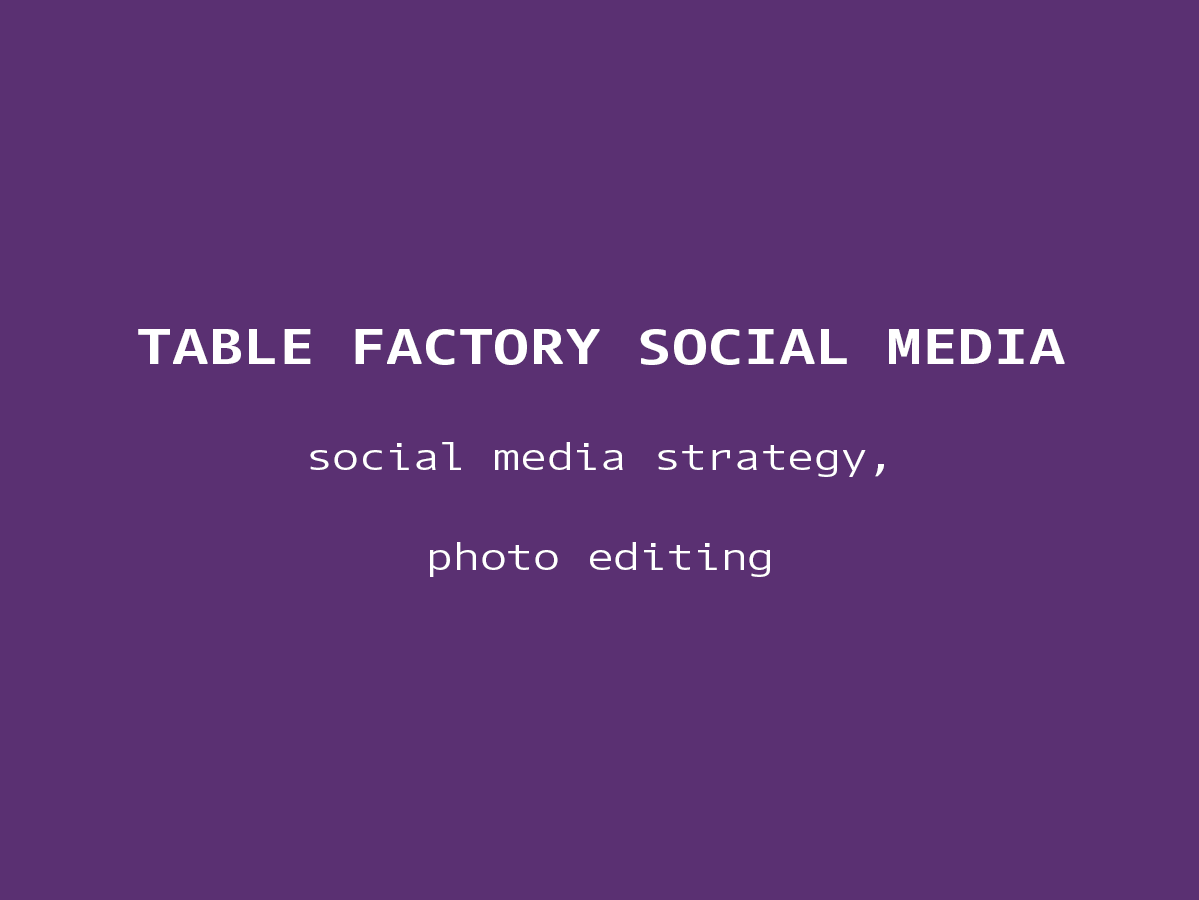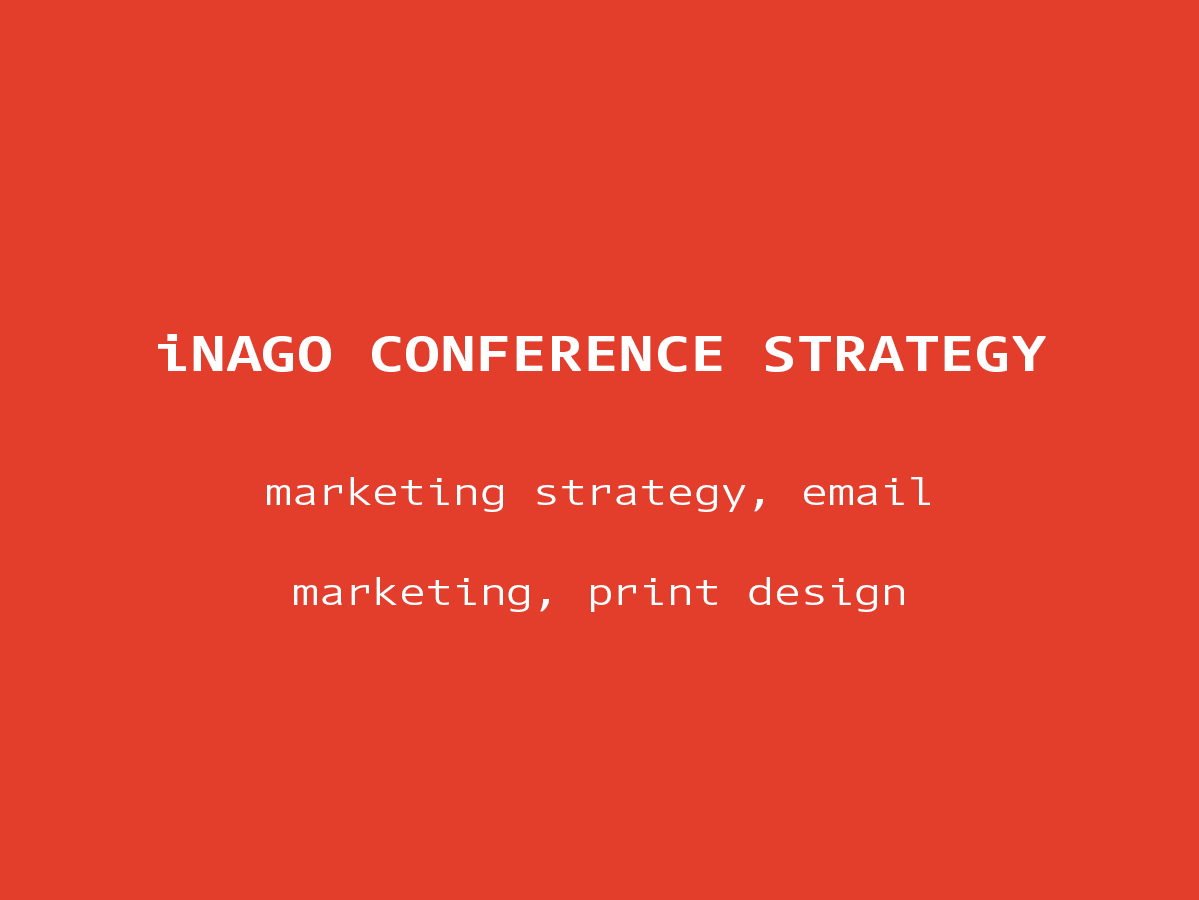Project Overview
The Table Factory is a local furniture company based in Kitchener-Waterloo, specializing in handmade custom tables. Their existing website, a few years old, was hindering their growth as their design and customization options expanded. The current web structure was no longer scalable. Bryan, the owner, approached me to design a new website structure that would enhance usability, accommodate future growth, and refresh the branding with a cleaner, more modern aesthetic
I developed a moodboard on Figma, drawing inspiration from modern furniture web design trends. While retaining the original brown and black from the existing color palette, I introduced blue and green accents to give the site a more contemporary feel.
The site was restructured to include an 'Explore' section designed to spark client imagination and showcase the company’s standout work for different segmentations, a 'Materials' section highlighting customization options, and an expanded 'About' section that emphasizes the company’s family-owned background—a key differentiator in the competitive furniture market.
After the moodboard was approved, I created mockups on Figma, with each page designed for the target audience. For example, on the 'Restaurant' explore page, Bryan wanted to highlight specific bases, so I placed them prominently at the top. In contrast, the 'Retail' section, with its greater variety, features a broader image gallery without a standout bases section. The designs were built for scalability, allowing photo galleries to grow and evolve easily. Another key update was standardizing the material sections; previously, images of the bases varied in size, so I adjusted them for a cleaner, more cohesive look. Lastly, I added employee photos to the 'About' and 'Contact' pages, creating a more personal connection by emphasizing the people behind the company.




Using WordPress, I designed a completely new website from the ground up. The client was deeply involved throughout the process, with each page going through several iterations before the final version was launched. A key update was adding the catalog as a prominent navigation button, as it serves as a crucial tool for clients to explore the customization process and view all available options.
What I Learned
① Maintain Constant Communication
Working remotely has underscored the importance of client involvement throughout the design process. Since the designs are tailored to their needs, it’s essential to stay aligned at every stage, particularly when it comes to timelines and key decisions.
Working remotely has underscored the importance of client involvement throughout the design process. Since the designs are tailored to their needs, it’s essential to stay aligned at every stage, particularly when it comes to timelines and key decisions.
② Iterate, Iterate, Iterate
Designing from the ground up required numerous versions of the final product. This experience emphasized the importance of not becoming attached to a single idea and staying open to new iterations that can enhance the outcome. Low-fidelity prototypes were especially valuable in ensuring the website matched the client’s vision before being built on WordPress.
Designing from the ground up required numerous versions of the final product. This experience emphasized the importance of not becoming attached to a single idea and staying open to new iterations that can enhance the outcome. Low-fidelity prototypes were especially valuable in ensuring the website matched the client’s vision before being built on WordPress.
③ Balance Your Vision with Client Needs
As a designer, I usually start projects with a clear vision. However, designing something of this scale for a client for the first time challenged me to balance their needs with my creative direction. Effective communication played a crucial role. I became adept at explaining and justifying my design choices while remaining open to client feedback. This balance between creative expression and collaboration was key to navigating the project successfully.
As a designer, I usually start projects with a clear vision. However, designing something of this scale for a client for the first time challenged me to balance their needs with my creative direction. Effective communication played a crucial role. I became adept at explaining and justifying my design choices while remaining open to client feedback. This balance between creative expression and collaboration was key to navigating the project successfully.










